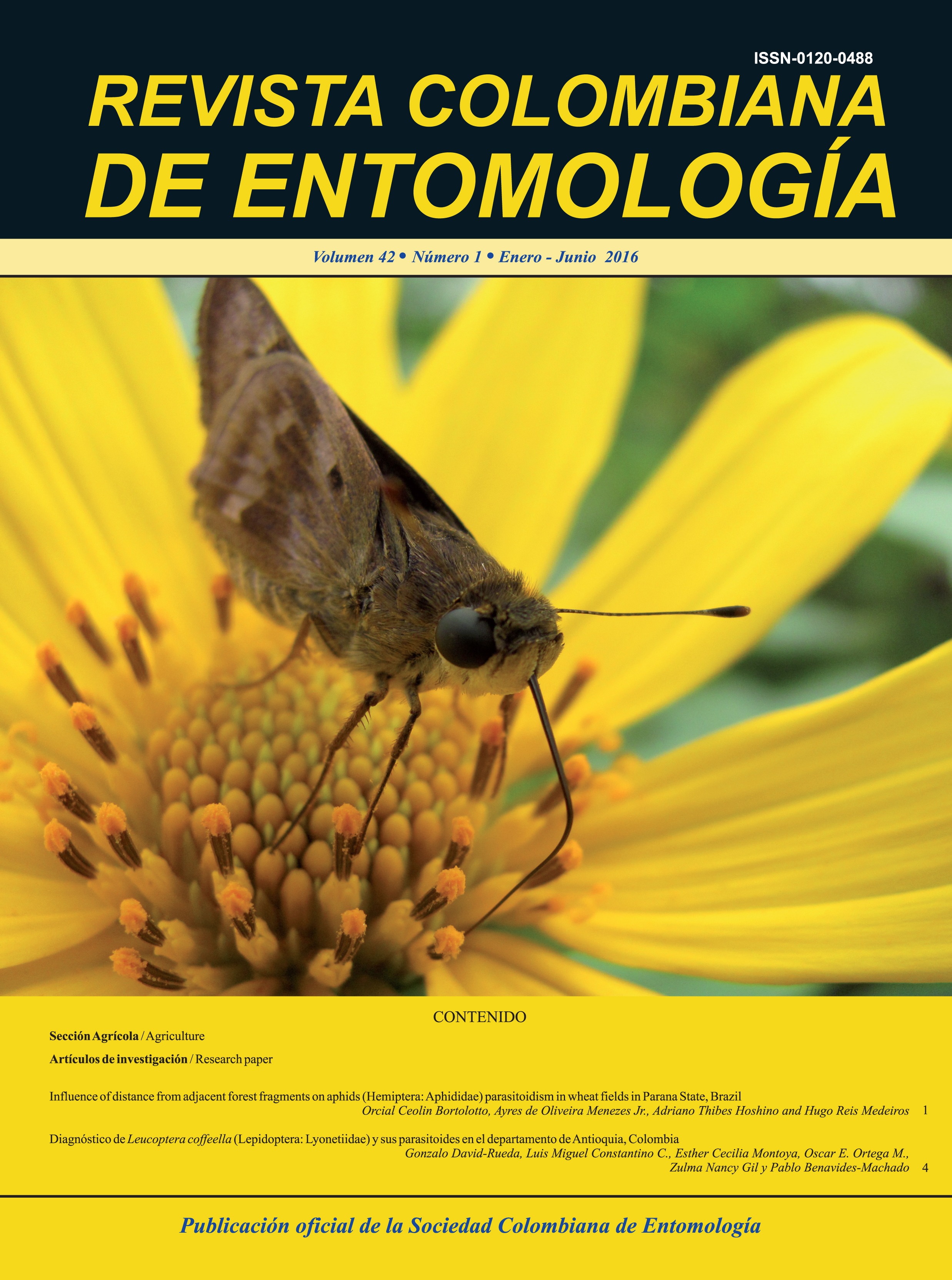Arthropods in necromass of two rosette plants species in different successional stages of Andean Páramo
Keywords:
Arthropods, Espeletia argentea, Espeletia grandiflora, Plant-insect interactions, Successions, High Andean ecosystemsMain Article Content
The paramos have been affected by landscape changes related to anthropogenic practices to establish rural settlements and farming. Such transformation has produced areas at different successional stages, mixed with natural vegetation. Frailejones are a species of plant very successful in the paramos, and an ideal model to the understanding of the processes of regeneration of communities. Because arthropods are key players in the variety of ecological processes in these communities, the taxonomic and functional diversity of artropofauna associated to the necromass of Espeletia argentea and E. grandiflora, were compared emphasizing in Coleoptera and Hymenoptera, in a not transformed area and two areas at different successional stages in the Cruz Verde paramo (Colombia). The highest richness, abundance and diversity of arthropods were found in E. argentea in the not transformed area. There were highly significant differences between the abundance of individuals established in the three study areas and in the two species of frailejon. Coleoptera and Hymenoptera had the higher diversity in E. argentea in the not transformed area. Coleoptera showed highly significant differences in the abundance of individuals by morphotypes. Meanwhile such differences were not found for Hymenoptera. Studies like this permit a better comprehension of the insect-plant interactions and its relationship with the transformation of the Andean paramo.
Downloads

This work is licensed under a Creative Commons Attribution-NonCommercial-ShareAlike 4.0 International License.
Authors retain the copyright on their work and are responsible for the ideas expressed in them. Once a manuscript is approved for publication, authors are asked for a publication license for the term of legal protection, for all territories that allows the use, dissemination and disclosure of the same.

